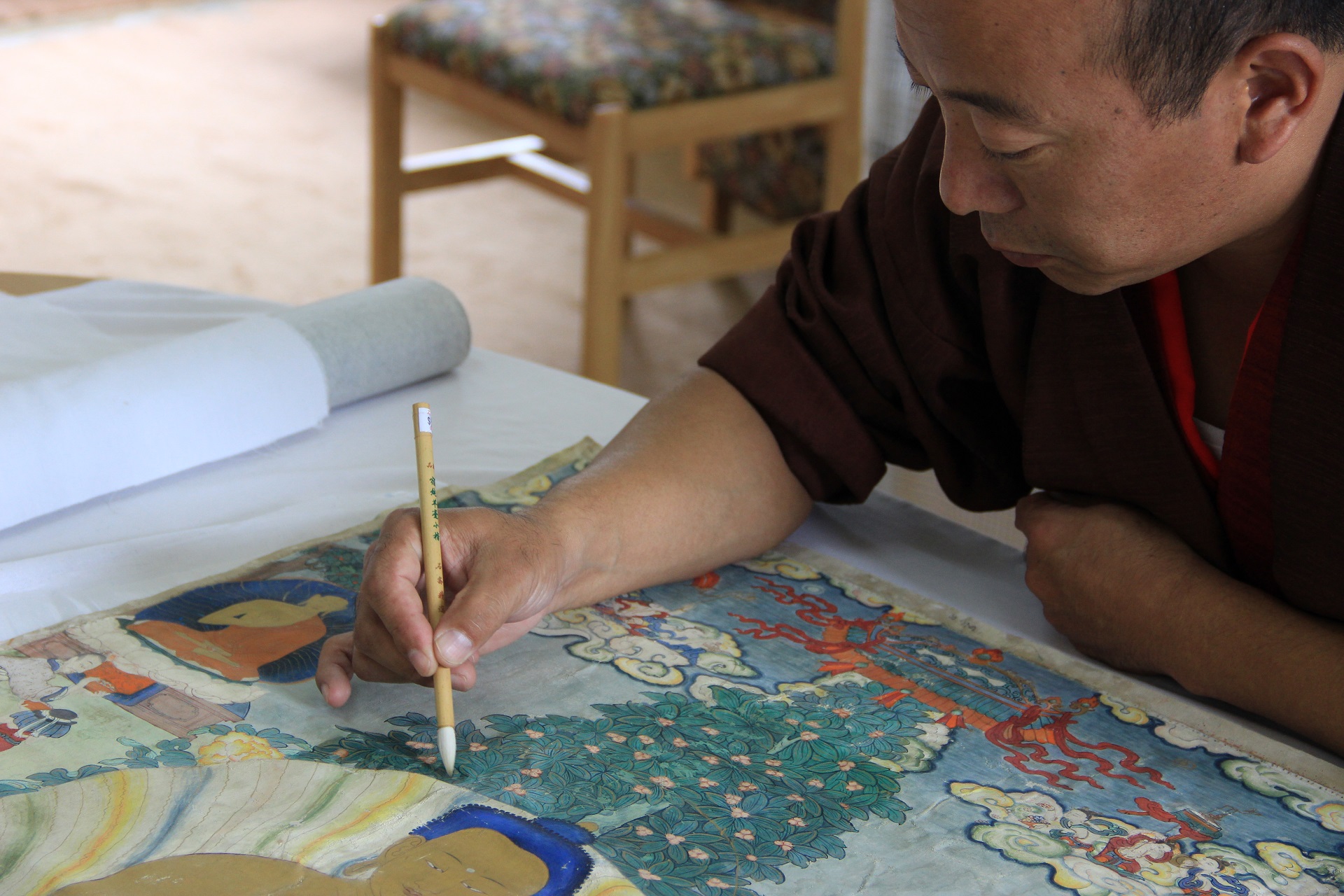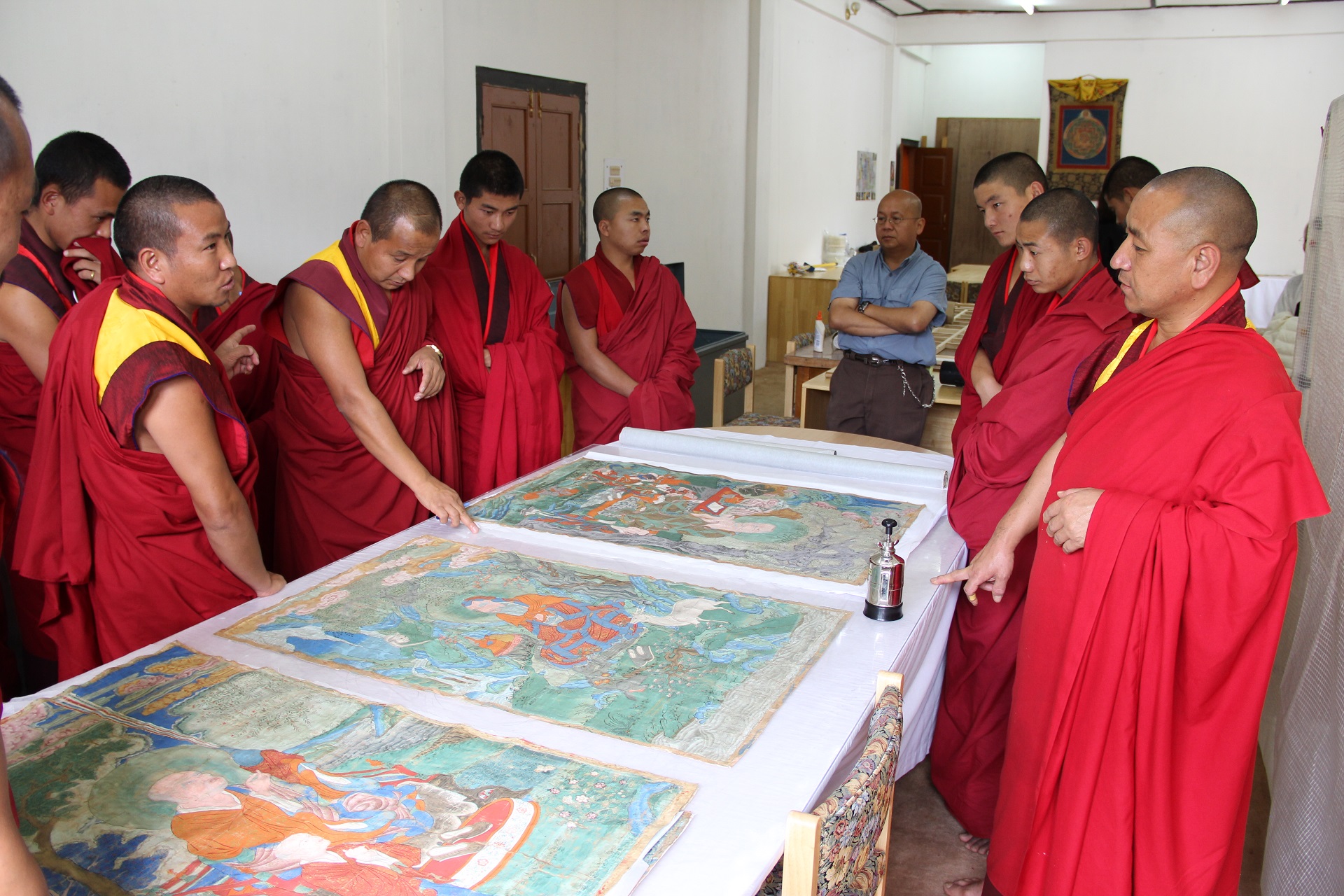
Thangkas are colourful, intricately painted fabric scrolls that act as a form of spiritual and historical storytelling. Historically Tibetan monks travelled with thangkas to spread Buddhist stories to the illiterate masses. Now, as older thangkas are believed to hold greater blessings, the scrolls are being restored to bless the future generations who are unable to meet Lamas of the past. Thangkas are often reserved for Buddhist monasteries and occasionally carried by monks to be shared with the public in ceremonial festivals.

Painting thangkas is a highly meditative process, asking the painter to spiritually connect with the scroll. In Dharma, the Buddhist way of nature, the deterioration of thangkas is comparable to a person with an illness, and restoration is offered as treatment. Conservators practice Buddhist love and compassion for the thangkas themselves, as they extend a thangka's lifetime.
However, the art of restoring thangkas is dying, as many monks would rather spend time creating new thangkas than spending equal amount of time conserving an older one. Though the few who endeavour because conservators find value in preserving the scrolls in hopes of passing on their skill, knowledge and the beauty to younger generations.

Unfortunately, due to modern and western influences, the younger generations in Bhutan have become disinterested in the traditional art form, losing its former religious value and even compromising the quality of newer thangkas. Westerners also tend to preserve thangkas rather than restoring them, so the art of restoration is heavily reliant on the Bhutanese people. However, the future of restoration is uncertain when young Bhutanese become increasingly modernised and uninterested in the art-form.